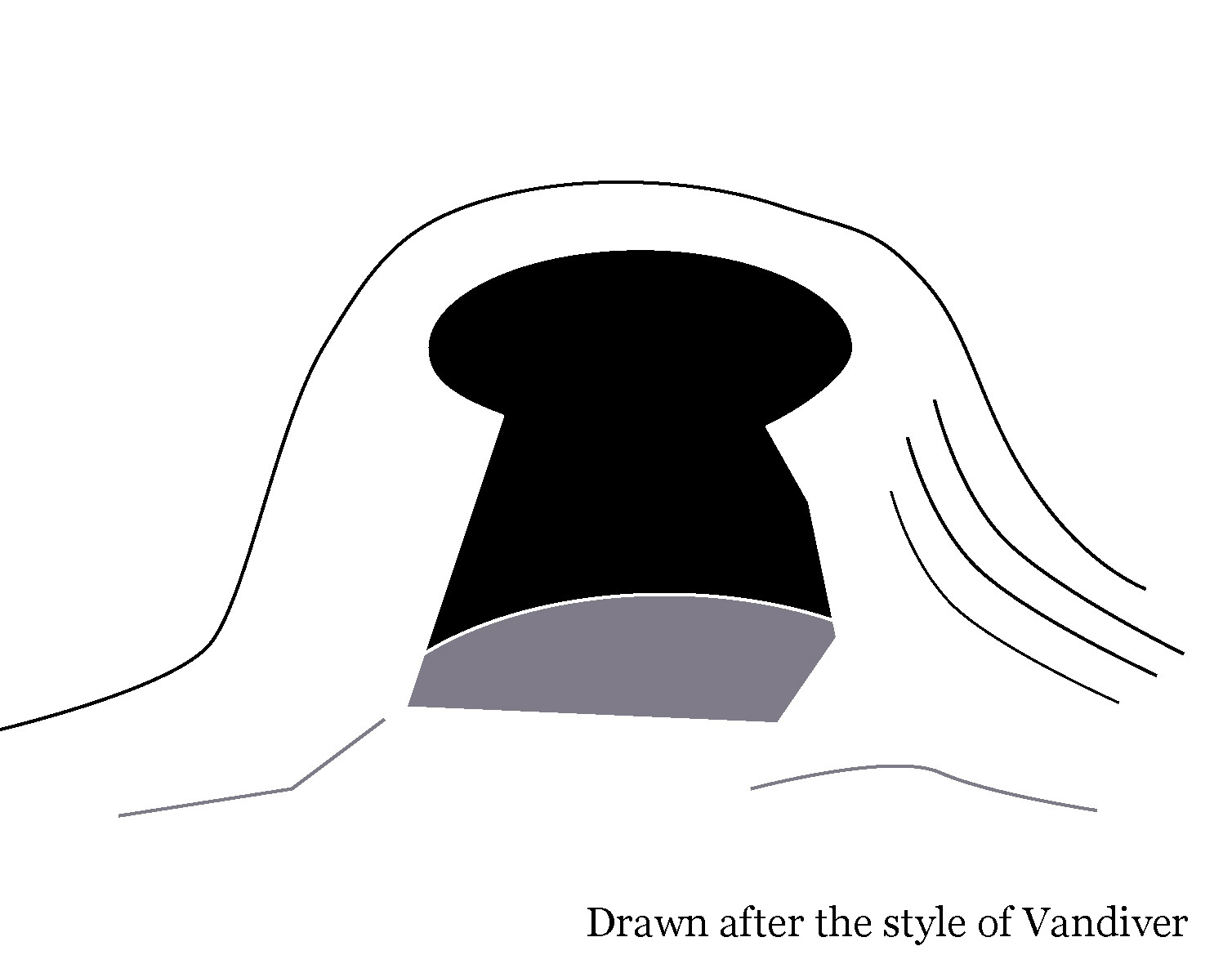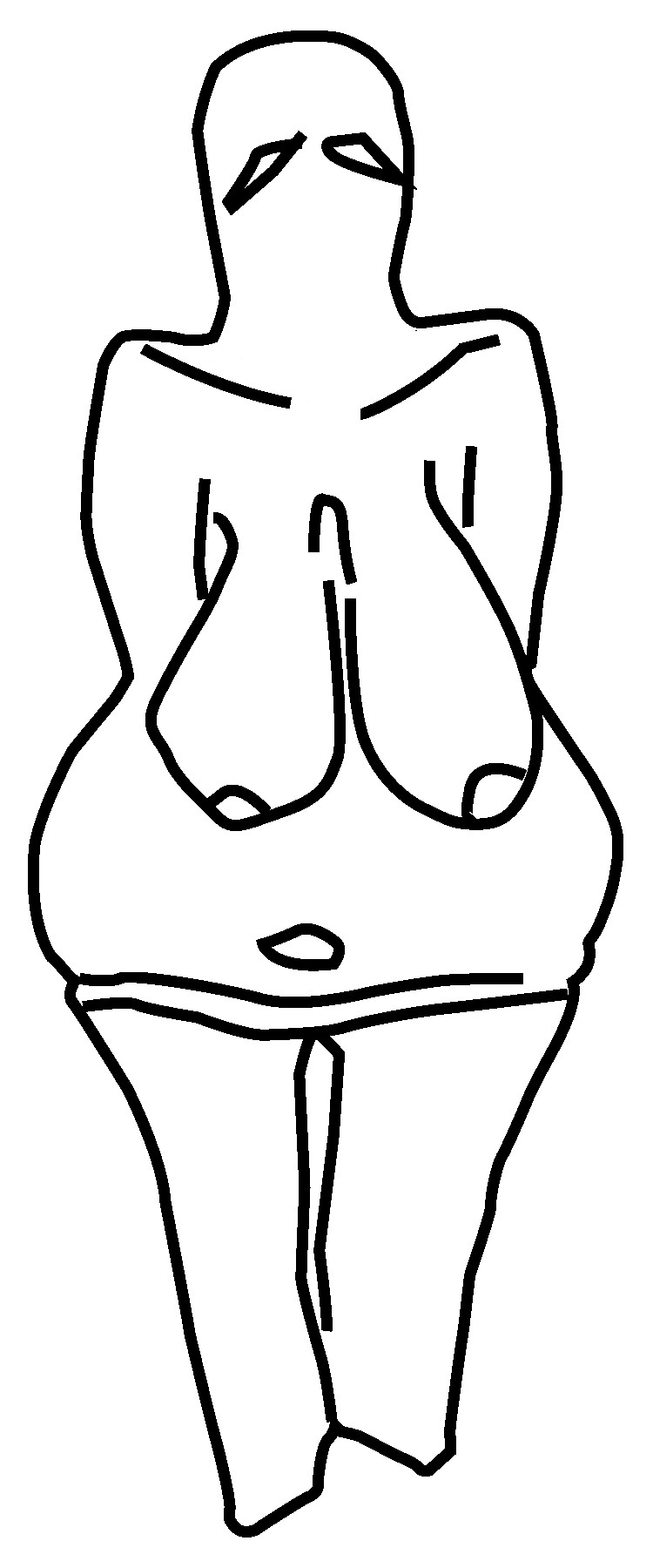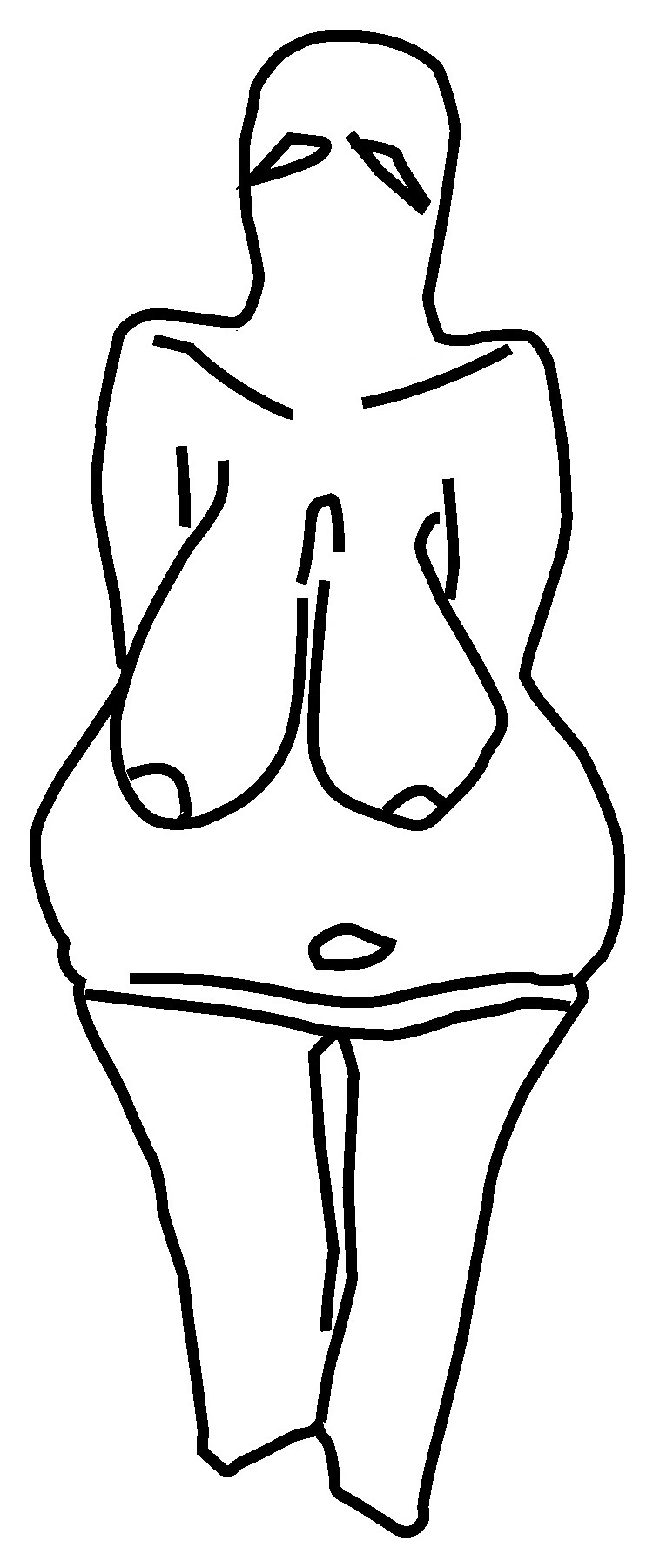| the Early Kilns | ||

|
||

|
These rather voluptuous fertility goddesses were made approximately 20,000 years before the great Pyramids of Egypt were built. Many of them were found, in situ, near the oval shaped kilns. There were also Bears and Lionesses. Through testing the firing ranges of the local clay "loess"1 it was determined to be a very forgiving material. It is thought that the material was worked in a plastic wetted state, like making a pinch-pot, with parts made separately and pushed onto the main form. This clay-like material was also found to be thermally somewhat shock resistant because of its porosity. There were thousands of fragmentary pieces at this site which attest to the many years of work there but also that the overall strategy was not a well understood technology. Irregardless, the importance of these items is huge: These are the oldest known ceramic objects in the world. Keep in mind that even today every potter or ceramist has his/her own little scrap pile. This is a percentage based operation. 1Am. Heritage Dictionary: "Loess," A buff to gray windblown deposit of fine-grained, calcareous silt or clay. |

|
| Successful Early Ceramics Kiln, 26,000 bce. Vandiver, Pamela, and others. 1989 "The Origins of Ceramic
Technology at Dolni Vestonice, Chechoslovakia." Science, vol. 246, pp 1002-1008.
For more information about these "Dolni-Vestonice" objects please visit: https://www.realmofhistory.com/2017/09/01/venus-of-dolni-vestonice-oldest-ceramic-artifact/ |
||

|
THE IMPORTANCE OF THIS MATERIAL:
There are two important things that happened at this site, Dolni Vestonice. This first is the artists of these early ceramic objects sat around a fire circle and raised the walls and packed an insulation material around to form the walls and built an opening in the top for the wind/air to blow into the kiln to force a higher temperature. Technically Brilliant! Of course the second great and fortuitous circumstance was the local material at the site was of a unique mix of material that could take the heat and form a ceramic body that survived the intense heat and became super durable. Very few things actually survive in a recognizable state for 25,000 years. So lucky circumstance! My interest with this kiln is the idea of building a high-walled campfire, not so useful for cooking, but absolutely essential for obtaining higher temperatures to harness the power of fire to utilize heat to do transformational work. |
|